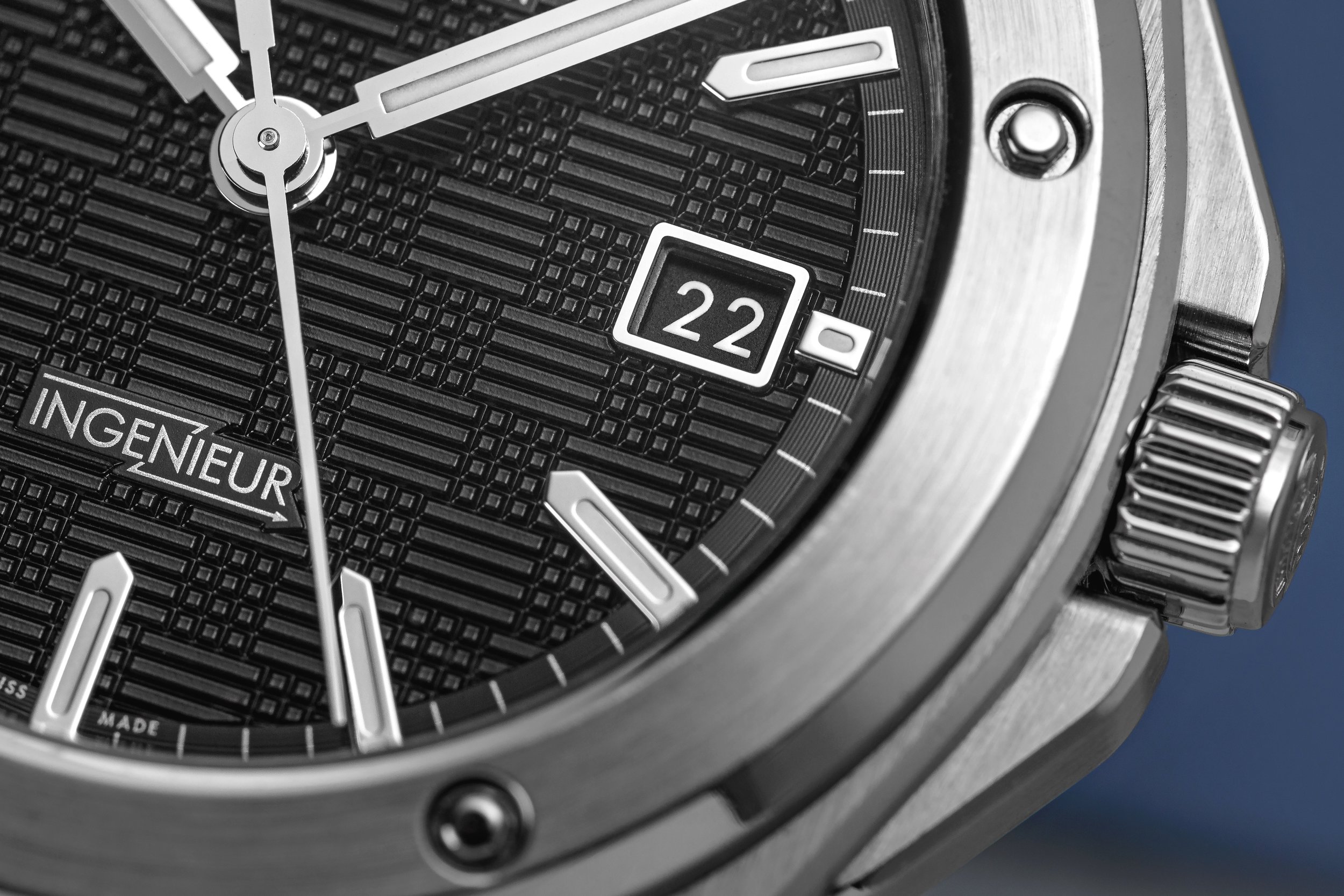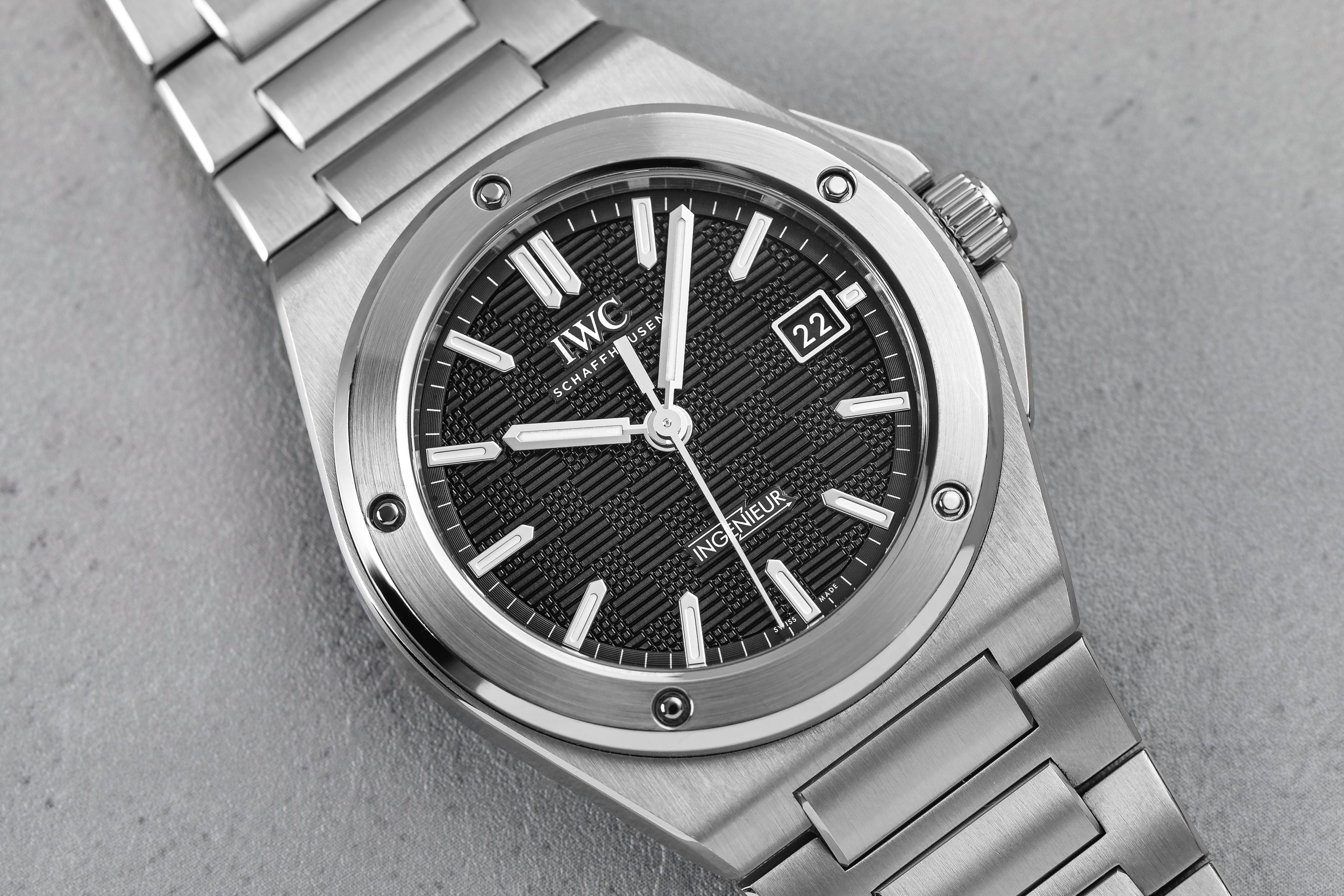Hands-On Review of the IWC Ingenieur Automatic 40
There are perhaps two trends among recent watch releases: one being steel watches with integrated bracelets; the other being Gerald Genta-inspired designs. And many would argue, perhaps rightfully, that these designs are becoming redundant and tired. I wouldn’t necessarily disagree.
However, when you have the actual bona fides of a Genta design, I see things a little differently. So when IWC released the new Ingenieur Automatic 40 at Watches & Wonders 2023, I was extremely excited. While the Patek Philippe Nautilus, one of Genta’s two most famous designs (along with the Audemars Piguet Royal Oak), was released in 1976, another of Genta’s designs also was first released in ‘76. Yes, the IWC Ingenieur SL ‘Jumbo’ (Ref. 1832).
Unlike the Royal Oak and the Nautilus, the Ingenieur was not initially a Genta design. While the Ingenieur was originally released in 1955, it was the maestro’s 1976 redesign that really breathed life into the collection. Given the era and the deisgner, the Ingenieur SL shares a lot of similarities to the Royal Oak and Nautilus. The dial of the Ingenieur SL has 5 screwes, similar to the screws on the Royal Oak, and the three link bracelet is reminscent of that of the Nautilus.
While their have been additional Ingenieur models released since 1976, the new Automatic 40 was released as a sort of homage or reissue on Genta’s Ingenieur. At first glance, you can see the similarities. The 5 screws on the bezel are present and the bracelet is a very similar 3-link bracelet. However, this watch is clearly a modern update. One of the biggest criticisms I have seen of Genta’s original Ingenieur is the bezel screws. while there were 5 screws on the bezel. The screws were not centered and, thus, you would see variations of the watch where the bezel orientations would differ wildly from each other. For a luxury watch, this didn’t sit right for people, and I can understand why (and because my neurosis it would definitely bug me). Well, I am happy to say that on the Ingenieur 40, IWC has corrected this. The 5 screws are symmetrically aligned as they should be on a luxury watch in its price-point.
Beyond the bezel correction, the Ingenieur 40 is also thinner than its predecessor. While the watch retains the 40mm case size of the original, the updated model is svelt 10.8mm thick (the original SL was 12mm thick). While some might think 1.2mm is not a big difference, it actually makes the watch a lot more wearable. This keeps the watch in line with the thickness of the Royal Oak Ref. 15510 (10.5mm thick). The watch is also a reasonable 45.7mm lug-to-lug with smaller lugs angled downward, making it very wearable, even on my 6.75 inch wrist.
Surely, the Ingenieur Automatic 40 will be most closely compared to the Royal Oak. Being a Royal Oak owner myself, I understand. The finishing seems on par with the Royal Oak, even though the Royal Oak retails for thousands more. As an owner of the Royal Oak Ref. 15400 I would say the Ingenieur actually wears a little better on my wrist. Though the Ingenieur is a bit thicker, the case being 1mm smaller and 6mm shorter lug-to-lug just looks better. I still love my Royal Oak though.
As evidenced by the price-tag and the brand’s Genta-centric marketing, IWC clearly wanted this watch to be mentioned along with the Royal Oak and Nautilus. I mean, the elevated price-tag clearly alludes to this. And if you wanted to to be considered among giants like the Royal Oak and Nautilus, you need a dial that lives up to these icons. IWC’s dial is a valiant effort. The geometric checkerboard dial of the Ingenieur might not be as iconic as the Royal Oak’s Grand Tapisserie dial or the Nautilus’ sunray, horizontally embossed dial, but its attractive and provides just enough visual interest without taking away from the rest of the watch. I reviewed the stainless steel model with black dial, and the dial was the most mentioned feature of the watch.
While the bezel might be more reminiscent of the Royal Oak, the bracelet is a 3-link H-Link bracelet with some extremely nice finishing. There are some similarities to the Nautilus’ bracelet, but I would say it pays tribute well to the Ingenieur SL’s bracelet. While on the aqua model, the middle link is polished, on all other models it is brushed (as is the rest of the bracelet). However, the middle link is raised a little bit from the rest of the bracelet and IWC has gone the extra mile polishing the chamfered edges of the middle link. This is a nice touch that I like to see from a brand positioning a luxury steel sport watch in the category IWC is positioning the Ingenieur in.
Inside the watch is IWC’s in-house caliber 3211 movement. The watch has a power reserve of 120-hours, has 21 jewels, and operates at a frequencey of 28'800 VPH (4 Hz). Its a solid movement, and the 120-hour power reserve is always nice when so many watches range from 40-72 hours.
The one complaint I see with the watch is its price-tag. At close to $12,000 USD, this definitely represents a step-up for IWCs without any complications. While I understand the consternation, the watch is extremely well-finished and still significantly less expensive than any steel Royal Oak or Nautilus you can buy (either at retail or on the secondary market). Because of this, it doesn’t really bother me that much. And you get an actual Genta-designed piece, as opposed the Genta-inspired watches we see throughout the industry (from both luxury and more affordable ateliers).
The only complaint I personally would have is the availability of the Ingenieur 40. You can’t get them. This piece that I’m reviewing is the first piece I’ve seen in the wild or even at a retailer. And it was the first piece many friends in the industry had seen as well (well, those that didn’t attend Watches & Wonders). Obviously, IWC is limiting the production, and I understand its good for the brand. However, with the inability to get Royal Oaks, Nautiluses and Vacheron Constantin Overseas, it would be nice to able to actually buy the somewhat more affordable option. Hopefully, we will see more come available in the near future.
In addition to the black dial version I reviewed, IWC also offers the Ingenieur 40 in stainless steel with white dial or aqua dial. I hope to see the aqua dial in the flesh soon. IWC also offers the watch in titanium (with a grey dial) for an additional $2,900 USD ($14,600 USD). All options are very well done in my opinion.
Overall, I came away as big a fan of the IWC Ingenieur Automatic 40 as I was going in. I would definitely consider buying one if they were available to me for purchase. IWC took a classic Genta design from their collection and modernized it in a way that makes it even better than the original. Price for the IWC Ingenieur Automatic 40 in stainless steel is $11,700 USD.
















